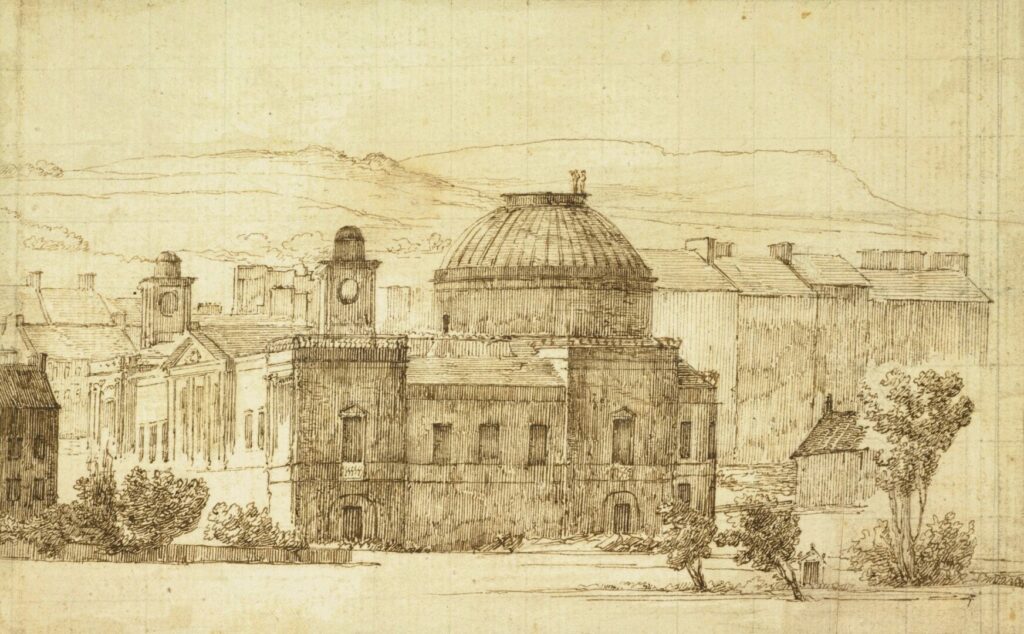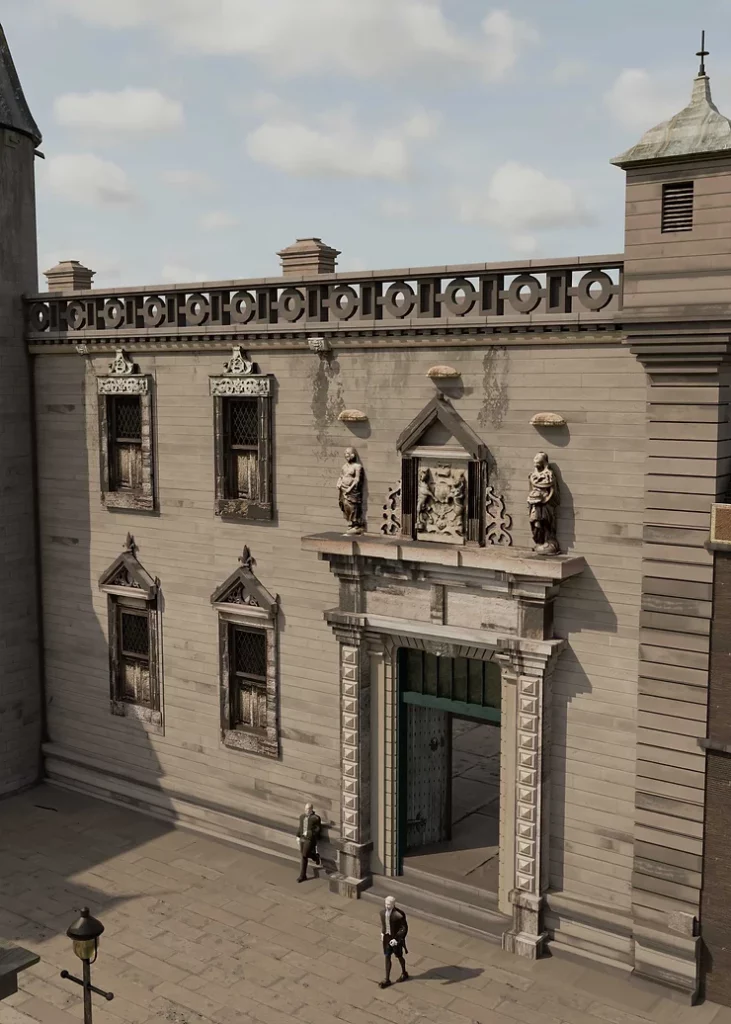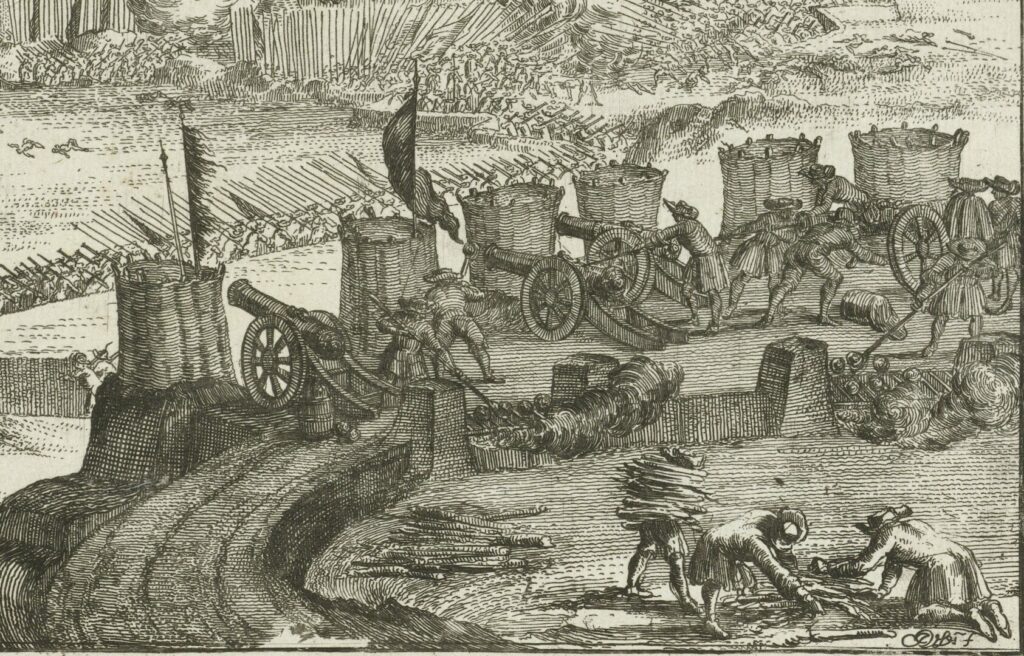Laying the foundation of General Register House, 1774
Two hundred and fifty years ago today, on 27th June 1774, the foundation stone of Register House was laid. Although the biographer and diarist James Boswell thought the ceremony lacked the appropriate pomp, it was a long-awaited start to providing an appropriate home for Scotland’s national records. Upon a brass plate the inscription on the foundation stone read: ‘CONSERVANDIS TABULIS PUBLICIS POSITUM EST ANNO MVIILXXIV MUNIFICENTIA OPTIMI ET PIENTISSIMI REGIS GEORGII TERTII’ (‘The preservation of public records in the year 1774 by the munificence of the best and most pious King George III’). In addition, a glass vase, hermetically sealed, was placed into the foundation stone along with every coin struck in gold, silver and copper during his reign, together with a gold medal commemorating his Coronation.
Concerns about documents held in ‘appalling’ conditions, including within the Laigh Hall of the old Parliament building, led a new Lord Clerk Register, the Earl of Morton, to obtain £12,000 from the Government, and to produce plans for a purpose-built facility, a “proper repository”. The funds were found from proceeds from forfeited estates of Jacobites.
On Morton’s death in 1768 his replacement, Frederick Campbell, took over, acquiring a prime site at the end of the North Bridge, then being constructed across the valley. Campbell, a younger son of the 4th Marquis of Argyll, ensured the architect Robert Adam was given the commission in 1772.
Robert Adam (1721-1792)
The Kirkcaldy-born and London-based Robert Adam (1721-92) was the son of Scotland’s premier architect William Adam, and by the 1770s was arguably Britain’s most fashionable and influential architect. Register House would be a key building in Edinburgh’s embryonic New Town, helping popularise development there. It also kickstarted a late career surge for Adam in his homeland, that would include Edinburgh’s Charlotte Square and the Old College.
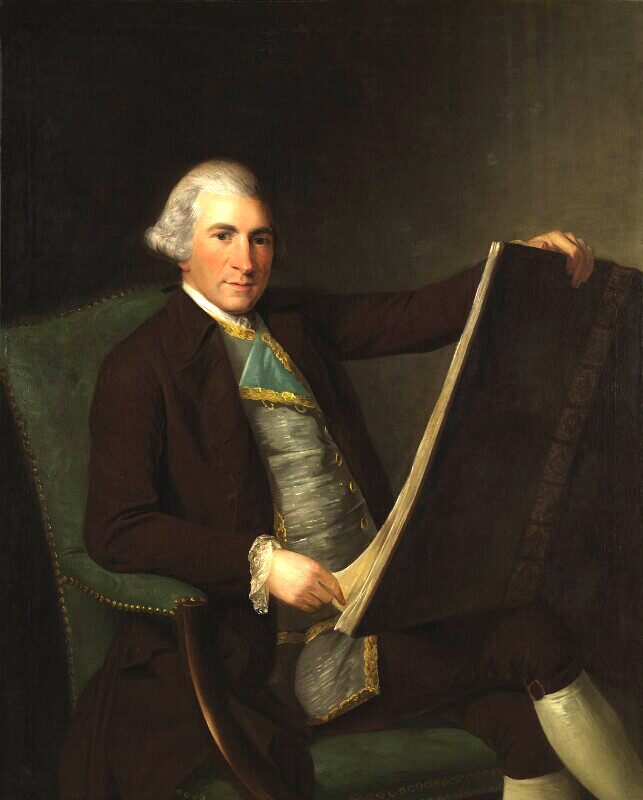
Adam supervised the project from London, relying on his eldest and youngest brothers John and William on the ground, along with a capable Clerk of Works, James Salisbury, sent up from London along with skilled English bricklayers. A local plasterer, Thomas Clayton Jr, supervised the dome’s interior decoration.
The Adam Dome
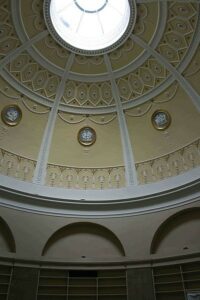
Echoing Morton’s plans, Adam provided a square building with central domed atrium and storage segments surrounded by offices. Faced in Craigleith stone, it utilised masonry vaulting to provide for fire-proofing and floor-loading. Its long symmetrical Neo-classical façade and large dome are a still a feature of the long vista north from the Bridges.
Construction progressed in fits and starts with a partial opening in 1788 and later additions. It was joined in the 1850s by New Register House next door to cope with the huge increase in records occasioned by the census collection and statutory registration of births, marriages and deaths in 1855.
Register House today: Home of the National Records of Scotland
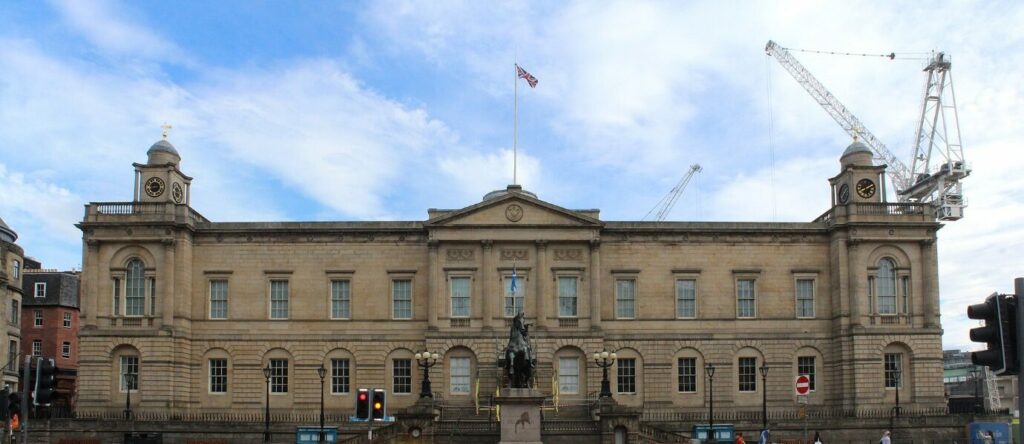
Register House was the first purpose-built facility for records storage in Britain and 250 years later continues to perform its original role.

